How and Why Should You Upgrade to 10Gbe – An Idiots Guide
Let’s face facts, our data is getting bigger and we want it even faster. As selfish as it sounds, both home and business users alike demand faster and faster data transmission in 2021, despite the obvious fact that the average size of our photos, music and videos are getting unquestionably larger. Luckily, at the same time as all of this, 10 Gigabit Ethernet (10Gbe) networks become increasingly more affordable and despite their lofty business only focus a decade ago, have become accessible to even modest home users and their budgets. Deciding to switch your home or office network from one-gigabit ethernet (1Gbe) to 10Gbe can often be intimidating, however, with numerous more cost-effective solutions and much more user-friendly hardware on offer, you can switch up your network to 10-gigabit for just a few £100’s. Today I’m going to detail each of the necessary components that you will need to consider when upgrading towards 10G, discuss their advantages and disadvantages, and recommend the best piece of 10Gb hardware for each tier of your setup in 2021.
Disclaimer – it is important to understand that increasing your network from the default 1Gbe to 10Gbe will increase the bandwidth available to you and your connected devices. However, bandwidth does not automatically translate to speed and you will still need to ensure that both targets and source hardware in the 10Gbe network can deliver the potential 1,000MB per second possible. It is best to think of your network as a series of pipes filled with water. Upgrading to 10-gigabit ethernet merely provides a larger pipe to send the water down, but you still need storage media and active data connections that can push data fast enough. First lets discuss the individual components that make up a modern 10Gbe network.
Upgrading to a 10Gbe Network – What You Need to Buy
In order to understand how much work is required when upgrading your network, it is worth knowing just how many different pieces of equipment you may need to buy when upgrading your internal bandwidth potential. The first most obvious upgrade is your switch (otherwise known as a network switch) – and you will need to look at 10Gbe equipped switches that allow each connected user the full potential to 1,000MB/s bandwidth each (or at the very least a single 10Gbe port that allows 10 users a full 100MB/s each). Managed switches, although more expensive, will allow you to combine these connections via link aggregation and trunking 2 or more to multiply this performance significantly, however, there are numerous affordable unmanaged 10Gbe switches out there too that are priced quite closely to 1Gbe counterparts.
Next, you will need to upgrade the network connectivity of your client devices, such as PCs, laptops and servers. Some 2020/2021 Prosumer hardware releases have started arriving with 10Gbe connectivity by default (e.g. the newest generation of Mac Pro Tower Machine) and to meet this there is thunderbolt to 10Gbe adapters available from numerous brands (I personally use the QNAP QNA-T310G1T or Sonnet Solo 10G – both of which use system power, so no mains power needed). Otherwise, there are numerous 1-port and 2-port PCIe upgrades readily available to buy that are even cheaper than external alternatives.
Next up, you need to think about whether you will want to use copper or fibre cable-based ethernet. Copper-based 10Gbe, known as 10GBASE-T, uses near-identical cables to those used in your standard 1Gbe connections (known as RJ45) and is much better suited to distances of up to 20 metres when deployed. After that distance, you will be much better off choosing fibre-based 10Gbe (known as SFP+ in architecture). This can cover many, MANY more times to distance, but see more expensive fibre cables. SFP+ 10Gbe also requires dedicated port transceivers (these connect between the client device and the cable), which adds to the cost even more. That said, there are MANY cost effect SFP+ only 10Gbe switches and NAS systems out there, as well as there being transceiver-ready shorter cables (called DAC cables) that are up to 5-7M long. There are other Pros and Cons to RJ45 and 10GBASE-T, so I recommend you check out my guide below quickly to learn the difference before going any further:
Click Below for the SFP+ vs 10GBASE-T Guide
Finally, we can talk about routers (which are arguably optional for most in this setup and still not quite mainstream in 10G). Although some modern routers do feature a dedicated 10Gbe LAN connection, it is worth remembering that most internet connections worldwide will not really be able to saturate 1,000MB/s of data. When you look at the internet plan that you have with your ISP, the speed is generally provided in bits ( ie Mb = megabit, Gb = gigabit), not BYTES. Unless you are living somewhere with a decent fibre optic connection, or dedicated high-speed business line that promises speeds higher than 1 gigabit, a 10Gbe router will only be able to push as much internet/external packet data to a connected user as the internet service provider allows in your initial plan. so there is no need to spend money on a 10Gbe equipped router unless your ISP subscription is comfortably approaching 5-6 gigabits (5Gb+). Aside from those three areas, nothing else in your typical hardware environment should require an upgrade when making the switch to a 10Gbe network. Remember, 10Gbe over copper and typical 1Gbe use exactly the same cables for connectivity (RJ45 or Cat cables) so you can reuse your existing setup easily. So, now we know the hardware, however, 10Gbe is recommended to use at least Cat 6 or Cat 7 cables, whereas regular 1Gbe and 2.5Gbe can get away with Cat 5 or Cat 5e. Let’s discuss the Pros and Cons of 10Gbe.
Upgrading to a 10Gbe Network – Price
The affordability of 10Gbe as an alternative to traditional gigabit ethernet LAN is getting better than it was when first commercial in 2008 or so (when it cost thousands!). When hardware started embracing 10Gbe connections, it was priced at an arguably fairer 3-4x times that of a normal 1Gb connection. However, it soon became apparent that due to demand in network use alongside data growing more rapidly in both home and business, that 1Gbe was fast becoming unsuitable for most businesses. Therefore in more recent times, the cost of 10Gbe has begun to arrive at just a pinch above that of accepted 1Gbe hardware (with numerous 2.5Gbe options arriving on the market meaning that the price is getting even better). In fact, many hardware manufacturers consider 1Gbe a tad dead in the water and have embraced 2.5Gbe, 5Gbe and affordable SFP/Copper10Gbe connections as standard at no additional increase thanks to more cost-effective ARM processors on the market from Realtek, Annapurna and Marvell (in the NAS community, the heavy hitters on this are QNAP and Asustor).
The real cost of a 10Gbe setup as an upgrade to, or an alternative to a 1Gbe setup, is in the network upgrades for traditional client hardware and interfaces. I am of course talking about PCs, tower servers, Apple Macs and just general day to day devices. Upgrading a desktop device with 10Gbe is around £80-100 per connection, about 75% more than the same thing at 1Gbe. For portable and less easy to upgrade devices, such as Macbooks and laptops, a 10Gbe to Thunderbolt 2/3 external adapter upgrade will cost you around £175-200, which is about 80% more than a 1Gbe USB or Docking Station alternatives.
Upgrading to a 10Gbe Network – Internet Speeds
As mentioned, 10Gbe networks are largely concerned with internal network traffic within your home or business building. The effects of introducing 10Gbe into your router/modem system with the aims of improved internet speeds on your devices are hugely dependent on your ISP subscription service and in most cases will not fully saturate a 10Gbe connection. If you have an internet connection that surpasses 1 Gigabit bandwidth, then you can start to enjoy the benefits of 10Gbe connected devices exceeding 100MBs, just ensure that you are using a primary modem and router that features a 10Gbe port, otherwise connecting a 10Gbe switch or additional router via 1Gbe will create an instantaneous bottleneck. If you are using wireless devices and looking to exceed 1Gbe, then you should look into WiFi 6/6E/AX (which we will touch on later). In 2021 there are a few 10Gbe Routers on the market from brands like Netgear and their NightHawk series, Asus in their Gamer ranges and QNAP in their QHora-301W System.
Upgrading to a 10Gbe Network – Availability
10Gbe hardware is a great deal more accessible and available in 2021 than ever. Alongside numerous affordable network upgrades via USB and PCIe, lots of motherboard makers, NAS server manufacturers and network switch brands have released 10Gbe options. Additionally, home or business users that have a 10Gbe setup that is shared by multiple 1Gbe uses can often allow connection of 10Gbe devices on these copper ports, as the majority of 10GBASE-T ports are backwards compatible with 5G, 10G and 1G (otherwise known as auto-negotiation). As mentioned earlier, a lot of hardware that would have once featured gigabit ethernet now arrives with 10Gbe connectivity at no additional cost, allowing a more gradual and organic upgrade into this larger bandwidth connection as you upgrade standard hardware in your environment. Lastly, the majority of plug-n-play 10Gbe upgrades for clients are reusable/shareable with numerous devices.
Upgrading to a 10Gbe Network – WiFi 6 and WiFi 6E Support?
One of the most attractive reasons that many users consider upgrading their setup to 10Gbe is due to the evolution in Wi-Fi connectivity, most recently in Wi-Fi 6. Otherwise known as 802.11AX, Wi-Fi 6 allows wireless connectivity that exceeds that of traditional 1Gbe LAN. Although the bandwidth and Wi-Fi coverage in Wi-Fi 6 is spread across multiple bands and frequencies (5Ghz and 5Ghz air communication, not to be confused with Gb data networks of measurement), it still allows bandwidths of 2.4Gigabits and greater (i,e 240MB/s). Many users who have upgraded their Wi-Fi network to Wi-Fi 6 (or holding out for Wi-Fi 6E) also want to upgrade their wired network to keep up, which is where 10Gbe hardware has grown in popularity noticeably. Indeed, a number of new Wi-Fi 6 solutions have arrived on the market in the last 12-months that also factor in dedicated 10Gbe ports and even 10Gbe in some cases (such as the QNAP QHora-301W). If you intend to set up your home or business environment wire-free, with a NAS in the centre for backups/sharing and wish to connect wirelessly to this device over Wi-Fi 6, then upgrading your NAS to at least a single 10Gbe connection will be hugely desirable and convenient. Equally, if you use a more modern WiFi 6 solutions with larger AX ratings (AX3000, AX6000 or AX11000 for example), then this will translate very well into multiple connected users and a 10Gbe (1,000MB/s) connected NAS or Network for sharing.
Upgrading to a 10Gbe Network – Recommended Products in 2021
So now we have discussed at length a number of the advantages and disadvantages to upgrading to a 10Gbe network environment. As mentioned, there are many new 10Gbe pieces of hardware available as 2021 continues, making the ease of choosing the right network components evermore confusing. Below I have detailed my recommended 10Gbe switch, NAS, Router, Plug-n-play laptop upgrade and Desktop PCIe upgrades to ensure that you are ready to make the jump to 10Gbe networking.
Recommended 10Gbe Switches
Likely the most important part of the 10Gbe network upgrade, the switch is what manages traffic between your client devices.
| Budget Unmanaged 10Gbe Switch
|
Budget Managed 10Gbe Switch
|
Best Budget Dedicated 10G
|
| QNAP QSW-308S | QNAP QSW-M408-4C | TRENDnet 8x 10G TEG-7080ES |
Recommended 10Gbe Laptop Upgrades
If your network is populated with more compact and portable devices, then you can still use a range of Thunderbolt connected devices to interact with a 10Gbe network. Here are the ones I recommend:
| Sonnet Solo 10G Adapter
|
QNAP QNA-T310G1S Adapter
|
ATTO TLN3-3102 Thunderlink 2x10G Adapter
|
| Thunderbolt3-to-10G Copper | Thunderbolt3-to-SFP+ Fibre | 2x Thunderbolt3-to-2x SFP+ Fibre |
Recommended 10Gbe Desktop PC Upgrades
If you are using a desktop PC/Mac/Linux system, then you are able to consider PCIe 10Gbe upgrades. Although these are more expensive than the plug n play alternatives, they do allow more connections per card. Here are the 10Gbe PCIe cards I recommend:
| 1 Port 10Gbe PCIe Card | 2 Port 10Gbe PCIe Card
|
Fully Featured 10Gbe PCIe Card
|
| TRENDnet 10Gbe TEG-10GECTX | QNAP QXG-10G2T-107 2x 10G | QNAP 10Gbe and 2x NVMe QM2-2P10G1T |
Recommended 10Gbe Routers
Once again, very much an ‘optional extra’, upgrading the router/modem in your network towards 10Gbe will only really be beneficial if your internet service is greater than 1Gbps. Never the less, there are some great 10Gbe, 5Gbe and 10Gbe routers out there, some of which even include WiFi 6 too. Here are the best 10Gbe routers right now in 2021:
| Best Gamer 10Gbe Router
|
Best Prosumer 10Gbe Router
|
Best Business 10Gbe Router
|
| ASUS AX11000 | ASUS AX6000 10G | QNAP QHora-301W 10G & WiFi 6 |
Recommended 10Gbe NAS Servers
When it comes to seeing the true value of an upgraded network environment, then a NAS that features greater than gigabit connectivity is a great way to show this. Whether you are feeding this NAS into a 10Gbe/10Gbe network switch shared environment, or directly interfacing (i.e network connection PC-to-NAS), greater than 1Gbe speeds will be abundantly clear. There are quite a large number of 10Gbe NAS systems available in the server market right now, but I have narrowed it down to three below based on how you want to interact with your data:
| Best Budget 10Gbe NAS
|
Best Prosumer 10Gbe NAS
|
Best Business 10Gbe NAS
|
| TS-431KX | TS-h973AX | TVS-872X |
Thanks for reading. Do you still need help? Use the NASCompares Free Advice section here – https://nascompares.com/contact-us. It is my free, unbias community support system that allows you to ask me questions about your ideal setup. It is NOT a sales platform, NOT a way to push hardware you don’t need and, although it is just manned by me and might take a day or two for me to reply, I will help you any way I can.
📧 SUBSCRIBE TO OUR NEWSLETTER 🔔
🔒 Join Inner Circle
Get an alert every time something gets added to this specific article!
This description contains links to Amazon. These links will take you to some of the products mentioned in today's content. As an Amazon Associate, I earn from qualifying purchases. Visit the NASCompares Deal Finder to find the best place to buy this device in your region, based on Service, Support and Reputation - Just Search for your NAS Drive in the Box Below
Need Advice on Data Storage from an Expert?
Finally, for free advice about your setup, just leave a message in the comments below here at NASCompares.com and we will get back to you. Need Help?
Where possible (and where appropriate) please provide as much information about your requirements, as then I can arrange the best answer and solution to your needs. Do not worry about your e-mail address being required, it will NOT be used in a mailing list and will NOT be used in any way other than to respond to your enquiry.
Need Help?
Where possible (and where appropriate) please provide as much information about your requirements, as then I can arrange the best answer and solution to your needs. Do not worry about your e-mail address being required, it will NOT be used in a mailing list and will NOT be used in any way other than to respond to your enquiry.

|
 |
The Best Bits (and Worst Bits) of NAS of 2025!
Minisforum MS-02 Ultra Review
Minisforum N5 NAS, 6 Months Later - Better, Worse, the Same?
Beelink ME Pro NAS Revealed
Best SOLID STORAGE NAS of 2025
Should You Worry About the NanoKVM Hidden Microphone?
Access content via Patreon or KO-FI





Discover more from NAS Compares
Subscribe to get the latest posts sent to your email.


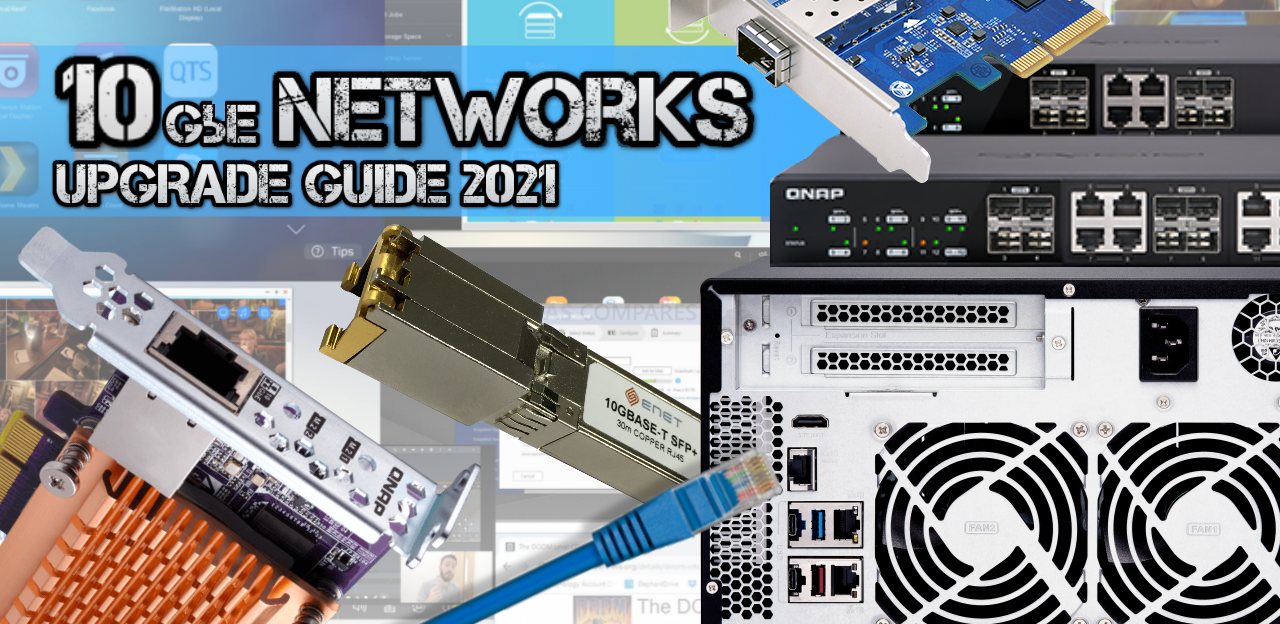
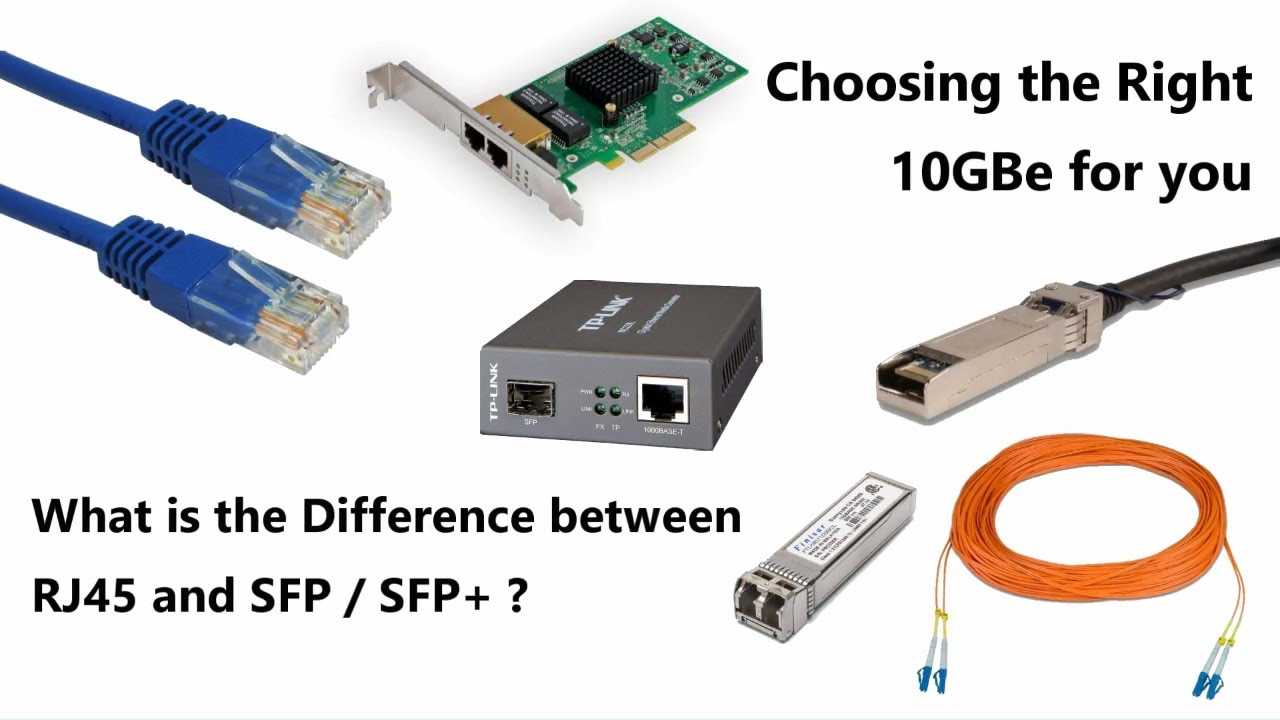
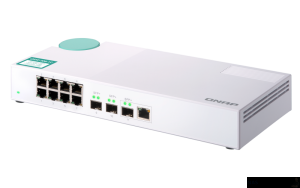



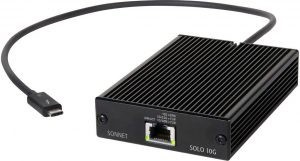
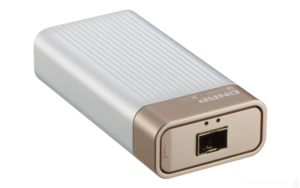
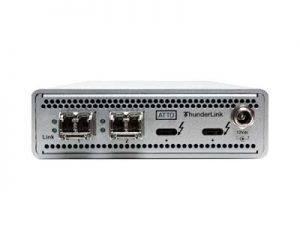
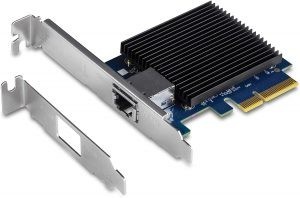
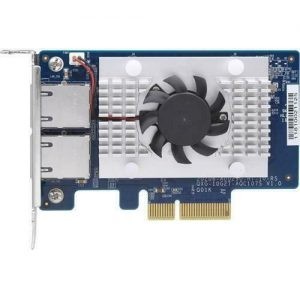
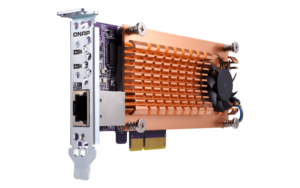
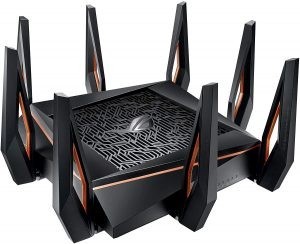
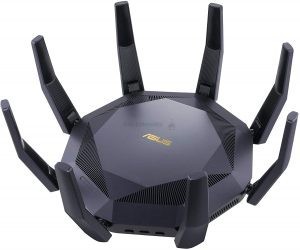
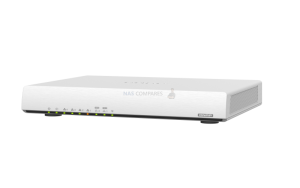
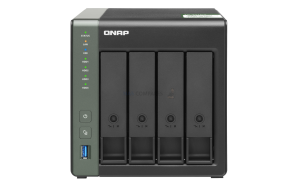
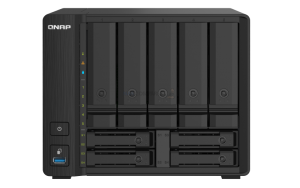
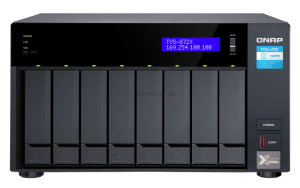



Wouldn’t 4x spinning HDDs in RAID0 saturate 10gbps? I get ~240mb/sec on each of my drives, so quadruple that with RAID0 and…
REPLY ON YOUTUBE
As for write speeds. That’s why we have nvme cache drives..
REPLY ON YOUTUBE
Thompson Mountains
REPLY ON YOUTUBE
Kutch Circles
REPLY ON YOUTUBE
6:10 How can I make my own customized fibre optical cables? How can I “crimp” my own LC/APC-Adapters on the optical cables? In the past I always bought fibre optical cables which already had the LC/APC plugs attached.
REPLY ON YOUTUBE
Just a heads up around the 6:00 mark WAN port allocation… For whatever reason you can NO longer configure the 10Gbe port to accept WAN.
Just this week I changed my internet provider. As a base I totally reset the 301W router to start fresh. Previously I had 10Gbe Port 1 as a WAN.
The latest FW for the router has changed the UI quite a bit and now as a result on the Network physical interface config page it is no longer possible to change the WAN port from the default 1Gbe Port 1.
Effectively limiting the 301W now to maximum 1x 1Gbps fibre connection! No better than a supplied ISP router. WTaF QNAP???
I’ve looked everywhere to change this setting so if anyone does actually know the solution to reactivating any of TWO 10Gbe for WAN please help!
REPLY ON YOUTUBE
What about smb multichannel?
REPLY ON YOUTUBE
What would you guys recommend for a photographer/videographer: link agg or 10GbE? I run a stock DS1522+. Thanks 🙂
REPLY ON YOUTUBE
This is a old video. Today what software is best to test my QNAP speed 10 GBE?
Could you do a new video showing the steps involve for such a test?
REPLY ON YOUTUBE
The Simpsons big book of briti*h smiles is real
REPLY ON YOUTUBE
I don’t understand how can they handle (either way 10gbe or 4LAG 1gbe) speeds far above the maximum transfer speeds of the WD RED NAS HDDs which is 180 MB/s. Can anyone explaint it to me?
REPLY ON YOUTUBE
Am I wasting my time trying to get better that 100MB a sec. read / write over 2.5 lan / 1gb link aggregation x2, with jumbo frames enabled to a SHR (Synology Hybrid Raid) cluster?
I should have used just RAID 5 🙁
REPLY ON YOUTUBE
Thanks. I just wish you had not mixed1000M and 10gbit when you talked about NAS and so. I would be beneficial do many with a drawing.
REPLY ON YOUTUBE
zzzzzzzzzz
REPLY ON YOUTUBE
Outstanding review.
REPLY ON YOUTUBE
fucking information firehose!! love it!
REPLY ON YOUTUBE
I thought you were going to recommended four (4) different 10GbE NAS RAID units that were capable of providing the 1000Mb throughput?
REPLY ON YOUTUBE
Great video thanks! Even if… 3 years later, it’s useful to me to assess if to move from 1GbE to 10GbE network, and upgrade a DS1019+ to DS1522+ with 10G card. The connection will be to my new Mac Studio Ultra with 10G interface, and in my NAS I’ll use Raid0/1 HDDs with 2 SSDs as R/W cache.
REPLY ON YOUTUBE
is it possible to create IPSEC Tunnel to other locations like to pfsense or Sophos etc. ?
REPLY ON YOUTUBE
Time to do a cost update?
REPLY ON YOUTUBE
I think the test is based more on the slowest link on your network connection between your computer, running the test, and your NAS. If your computer has 1gb Nic it won’t matter as much if you used 10Gb on your nas.. if you are connected to a switch via 1gb also it would affect performance. The only benefit of the 10gb would be more users can access the NAS over the network and not affect, or less effect, on the down/ups speeds. now, if you use 10GB all around, that would be a different story, but then, how often do you see 10gb networks at home. So, I think the 10Gb added to the NAS and to a 10gb port not he switch, it is more of a performance when having more users accessing the NAS over the network but not a single user, (if 1gb is still used on the computer)
REPLY ON YOUTUBE
Does anyone know if you can use the QNAP USB 3.2 Gen 1 Type-C to 5GbE RJ45 Single Port Adapter (QNA-UC5G1T) on the usb ports to add 5GbE connections?
REPLY ON YOUTUBE
I watch this _after_ I bought ????
REPLY ON YOUTUBE
Fiber cable is actually competitive with copper. I will normally install fiber if needs exceed CAT6. ALL cabling between buildings is always fiber. The cost is the termination of the fiber. But depending on the spec needed there are now field-installed connectors around $20 each (4 per average “cable”).
If you are doing it in a home pre-terminated multi-mode cable is very affordable but has installation code limites.
REPLY ON YOUTUBE
It would be interesting to see this test done with 2 (or more) PC’s accessing the NAS simultaneously. Would one 10Gbe or (4)1Gbe LAG be faster?
REPLY ON YOUTUBE
Most of these solutions are too bulky for smaller apartments. I’m considering getting the QNAP
TS-251D-4G plus the QNAP QM2-2P10G1TA. Is there anything better for a 2 bay + M.2 nvme solution than this for 10Gbe?
REPLY ON YOUTUBE
can you make a 10 gig wan port and a 10 gig lan port?
REPLY ON YOUTUBE
Hey @NASCompares, what happens if I keep both a 1GbeE port and the 10Gbe port connected to my network? My DS1621+ is connected to my 10Gbe switch using Lan5 on the 10Gbe card, but I forgot to unplug the Lan1 cable that was connected to a port in my router that is connected to a 1Gbe port in the switch. Does that provide a sort of redundancy, can cause corruption or does nothing at all?
REPLY ON YOUTUBE
Can you do the video on how to setup link aggregation to work in this manner?
REPLY ON YOUTUBE
Those wifi speeds are terrible….. And I’m impressed that months after it’s release, it still does not support jumbo frames on the LAN ports. Such a basic thing….
REPLY ON YOUTUBE